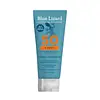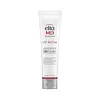What's inside
What's inside
 Key Ingredients
Key Ingredients

 Benefits
Benefits

 Concerns
Concerns

 Ingredients Side-by-side
Ingredients Side-by-side

Titanium Dioxide 8%
Cosmetic ColorantZinc Oxide 10%
Cosmetic Colorant1,2-Hexanediol
Skin ConditioningAlumina
AbrasiveAluminum Stearate
Cosmetic ColorantButyloctyl Salicylate
Skin ConditioningC12-15 Alkyl Benzoate
AntimicrobialCaprylyl Glycol
EmollientCetyl Dimethicone
EmollientCetyl PEG/PPG-10/1 Dimethicone
EmulsifyingCopper Gluconate
Skin ConditioningDimethicone
EmollientDisodium EDTA
Ethylhexyl Palmitate
EmollientEthylhexyl Stearate
EmollientEuphorbia Cerifera Wax
Hexyl Laurate
EmollientHydroxyacetophenone
AntioxidantMagnesium Aspartate
Skin ConditioningMethyl Glucose Dioleate
EmollientOctyldodecyl Neopentanoate
EmollientPEG-7 Hydrogenated Castor Oil
EmulsifyingPentylene Glycol
Skin ConditioningPolyglyceryl-4 Isostearate
EmulsifyingPolyhydroxystearic Acid
EmulsifyingPropanediol
SolventTocopherol
AntioxidantTocopheryl Acetate
AntioxidantTriethoxycaprylylsilane
Trimethylsiloxysilicate
EmollientVp/Hexadecene Copolymer
Water
Skin ConditioningZinc Gluconate
Skin ConditioningTitanium Dioxide 8%, Zinc Oxide 10%, 1,2-Hexanediol, Alumina, Aluminum Stearate, Butyloctyl Salicylate, C12-15 Alkyl Benzoate, Caprylyl Glycol, Cetyl Dimethicone, Cetyl PEG/PPG-10/1 Dimethicone, Copper Gluconate, Dimethicone, Disodium EDTA, Ethylhexyl Palmitate, Ethylhexyl Stearate, Euphorbia Cerifera Wax, Hexyl Laurate, Hydroxyacetophenone, Magnesium Aspartate, Methyl Glucose Dioleate, Octyldodecyl Neopentanoate, PEG-7 Hydrogenated Castor Oil, Pentylene Glycol, Polyglyceryl-4 Isostearate, Polyhydroxystearic Acid, Propanediol, Tocopherol, Tocopheryl Acetate, Triethoxycaprylylsilane, Trimethylsiloxysilicate, Vp/Hexadecene Copolymer, Water, Zinc Gluconate
Zinc Oxide 19%
Cosmetic ColorantTitanium Dioxide 4%
Cosmetic ColorantWater
Skin ConditioningCaprylic/Capric Triglyceride
MaskingCoco-Caprylate/Caprate
EmollientEthyl Macadamiate
Skin ConditioningGlycerin
HumectantSorbitan Olivate
EmulsifyingPolyglyceryl-6 Polyricinoleate
EmulsifyingC15-19 Alkane
SolventHydrogenated Polyisobutene
EmollientSodium Chloride
MaskingTriethoxycaprylylsilane
Silica
AbrasiveTocopherol
AntioxidantGlyceryl Behenate
EmollientHydroxyacetophenone
AntioxidantPolyhydroxystearic Acid
EmulsifyingPolyglyceryl-2 Isostearate
EmulsifyingDisteardimonium Hectorite
Stabilising1,2-Hexanediol
Skin ConditioningCaprylyl Glycol
EmollientHydrolyzed Jojoba Esters
Skin ConditioningXanthan Gum
EmulsifyingDimethicone
EmollientSclerotium Gum
Emulsion StabilisingLecithin
EmollientPullulan
Trisodium Ethylenediamine Disuccinate
Jojoba Esters
EmollientPolygonum Aviculare Extract
EmollientMalic Acid
BufferingPotassium Sorbate
PreservativeSodium Benzoate
MaskingZinc Oxide 19%, Titanium Dioxide 4%, Water, Caprylic/Capric Triglyceride, Coco-Caprylate/Caprate, Ethyl Macadamiate, Glycerin, Sorbitan Olivate, Polyglyceryl-6 Polyricinoleate, C15-19 Alkane, Hydrogenated Polyisobutene, Sodium Chloride, Triethoxycaprylylsilane, Silica, Tocopherol, Glyceryl Behenate, Hydroxyacetophenone, Polyhydroxystearic Acid, Polyglyceryl-2 Isostearate, Disteardimonium Hectorite, 1,2-Hexanediol, Caprylyl Glycol, Hydrolyzed Jojoba Esters, Xanthan Gum, Dimethicone, Sclerotium Gum, Lecithin, Pullulan, Trisodium Ethylenediamine Disuccinate, Jojoba Esters, Polygonum Aviculare Extract, Malic Acid, Potassium Sorbate, Sodium Benzoate
 Reviews
Reviews

Ingredients Explained
These ingredients are found in both products.
Ingredients higher up in an ingredient list are typically present in a larger amount.
1,2-Hexanediol is a synthetic liquid and another multi-functional powerhouse.
It is a:
- Humectant, drawing moisture into the skin
- Emollient, helping to soften skin
- Solvent, dispersing and stabilizing formulas
- Preservative booster, enhancing the antimicrobial activity of other preservatives
Caprylyl Glycol is a humectant and emollient, meaning it attracts and preserves moisture.
It is a common ingredient in many products, especially those designed to hydrate skin. The primary benefits are retaining moisture, skin softening, and promoting a healthy skin barrier.
Though Caprylyl Glycol is an alcohol derived from fatty acids, it is not the kind that can dry out skin.
This ingredient is also used as a preservative to extend the life of products. It has slight antimicrobial properties.
Learn more about Caprylyl GlycolDimethicone is a type of synthetic silicone created from natural materials such as quartz.
What it does:
Dimethicone comes in different viscosities:
Depending on the viscosity, dimethicone has different properties.
Ingredients lists don't always show which type is used, so we recommend reaching out to the brand if you have questions about the viscosity.
This ingredient is unlikely to cause irritation because it does not get absorbed into skin. However, people with silicone allergies should be careful about using this ingredient.
Note: Dimethicone may contribute to pilling. This is because it is not oil or water soluble, so pilling may occur when layered with products. When mixed with heavy oils in a formula, the outcome is also quite greasy.
Learn more about DimethiconeHydroxyacetophenone is antioxidant with skin conditioning and soothing properties. It also boosts the efficiency of preservatives.
This ingredient is not irritating or sensitizing.
Polyhydroxystearic Acid is a soft wax made from castor oil.
It is is a texture thickener, emulsifier, and film-former. Emulsifiers prevent ingredients from separating, such as oils and waters.
Polyhydroxystearic Acid may not be fungal acne safe.
Learn more about Polyhydroxystearic AcidTitanium dioxide is a mineral UV filter widely used in sunscreens and cosmetics.
It is one of only two UV filters officially classified as “mineral” by regulatory agencies, the other being zinc oxide.
Titanium dioxide provides broad-spectrum protection mostly in the UVB and UVAII range, with some protection in the UVAI range.
While its UVA protection isn’t as strong as zinc oxide’s, the difference is minor.
A common myth is that mineral UV filters reflect UV light. However, modern research shows titanium dioxide absorbs UV radiation like chemical filters (~95% absorption & 5% reflection).
Thanks to its non-irritating nature, titanium dioxide is suitable for sensitive, acne-prone, or redness-prone skin. It is unlikely to cause "eye sting" like other sunscreen ingredients.
A major drawback of this ingredient is its white cast and thick texture. This is why mineral sunscreens often leave a white cast and are less cosmetically elegant than chemical/hybrid sunscreens.
To improve white cast and spreadability, micronized or nano-sized titanium dioxide is often used.
There are ongoing concerns surrounding nano-titanium oxide's impact on marine ecosystems.
There is no conclusive evidence that any form of titanium oxide (or any other sunscreen ingredients) will cause harm to marine ecosystems or coral reefs. The science is still developing but many consumers are keeping a close eye on this issue.
Please note, many destinations have reef-safety sunscreen rules. For instance, the U.S. Virgin Islands advises all visitors to use non-nano mineral sunscreens.
Nano mineral sunscreens once raised safety concerns about absorption into skin.
Extensive research has shown that they do not penetrate healthy or damaged skin; they remain safely on the surface and the top layer of dead skin (stratum corneum).
You'll likely find titanium dioxide bundled with alumina, silica, or dimethicone. These ingredients help make titanium dioxide highly photostable; this prevents it from interacting with other formula components under UV light.
Learn more about Titanium DioxideTocopherol (also known as Vitamin E) is a common antioxidant used to help protect the skin from free-radicals and strengthen the skin barrier. It's also fat soluble - this means our skin is great at absorbing it.
Vitamin E also helps keep your natural skin lipids healthy. Your lipid skin barrier naturally consists of lipids, ceramides, and fatty acids. Vitamin E offers extra protection for your skin’s lipid barrier, keeping your skin healthy and nourished.
Another benefit is a bit of UV protection. Vitamin E helps reduce the damage caused by UVB rays. (It should not replace your sunscreen). Combining it with Vitamin C can decrease sunburned cells and hyperpigmentation after UV exposure.
You might have noticed Vitamin E + C often paired together. This is because it is great at stabilizing Vitamin C. Using the two together helps increase the effectiveness of both ingredients.
There are often claims that Vitamin E can reduce/prevent scarring, but these claims haven't been confirmed by scientific research.
Learn more about TocopherolTriethoxycaprylylsilane is a silicone used to bind and stabilize ingredients.
As an emulsifier, it helps prevent ingredients from separating. This can help elongate the shelf life of products.
Triethoxycaprylylsilane is often used to coat mineral sunscreens ingredients to help give a better feel. It also helps reduce oxidative stress in sunscreens.
Learn more about TriethoxycaprylylsilaneWater. It's the most common cosmetic ingredient of all. You'll usually see it at the top of ingredient lists, meaning that it makes up the largest part of the product.
So why is it so popular? Water most often acts as a solvent - this means that it helps dissolve other ingredients into the formulation.
You'll also recognize water as that liquid we all need to stay alive. If you see this, drink a glass of water. Stay hydrated!
Learn more about WaterZinc Oxide is a mineral broad-spectrum UV filter; it is the broadest UVA and UVB reflector approved by the FDA. It also has skin protectant and skin soothing properties.
Zinc oxide is one of the most effective broad-spectrum UV filters. It protects against UVB, UVAII, and UVAI. In comparison to its counterpart titanium dioxide, zinc oxide provides uniform and extended UVA protection.
Another great benefit? This ingredient is highly photostable so it won't degrade easily under sunlight.
A common myth is that mineral UV filters are widely believed to primarily reflect UV light.
However, modern research shows titanium dioxide absorbs UV radiation like chemical filters (~95% absorption & 5% reflection).
Zinc oxide has great skin soothing properties so you'll likely find this in sunscreens formulated for sensitive skin or babies/children. It is unlikely to cause "eye sting" like other sunscreen ingredients.
Regulatory agencies consider zinc oxide to be non-toxic and safe. It has also been shown to not penetrate the skin.
Unfortunately, this ingredient does leave a visible white cast. This is why mineral sunscreens are often less cosmetically elegant than chemical or hybrid ones.
In cosmetics, zinc oxide can be found in both non-nano and nano-sized forms. The nano version is used to reduce white cast and improve the texture of sunscreen formulas.
There are ongoing concerns surrounding nano-zinc oxide's impact on marine ecosystems and whether it can be absorbed into skin.
Regarding marine ecosystems and coral reefs, there is no conclusive evidence that any form of zinc oxide (or any other sunscreen ingredients) will cause harm. The science is still developing but many consumers are keeping a close eye on this issue.
Please note, many destinations have reef-safety sunscreen rules. For instance, the U.S. Virgin Islands advises all visitors to use non-nano mineral sunscreens.
There has also been some stir about whether micronized or nano zinc oxide has potential photoxicity and absorption through the skin/lungs.
An in-vitro (done in a test tube or petri dish) study demonstrated micronized zinc oxide to have potential phototoxicity. There's no need to fret; the EU Commission's Scientific Committee on Consumer Safety has stated, "The relevance of these findings needs to be clarified by appropriate investigations in vivo." Or in other words, further studies done on living organisms are needed to prove this.
Current research shows zinc oxide nanoparticles do not penetrate intact or sunburned skin. They either remain on the surface or in the outermost layer of dead skin (stratum corneum).
Zinc oxide is one of only two classified mineral UV filters with titanium dioxide being the other one.
Fun fact: Zinc has been used throughout history as an ingredient in paint and medicine. An Indian text from 500BC is believed to list zinc oxide as a salve for open wound. The Ancient Greek physician Dioscorides has also mentioned the use of zinc as an ointment in 1AD.
Learn more about Zinc Oxide